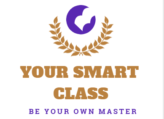Maxims of Teaching
Introduction-
Maxims of Teaching: –
The maxims of teaching energize both the teacher and the taught and make them active and co-operative. Maxims of teaching also help in arousing interest and motivating students. Keeping in view the importance of maxims in the teaching learning process, some of the important maxims of teaching are discussed below:-
Maxims of Teaching-
a. Proceed from known to unknown:- The most natural and simple way of teaching a lesson is to proceed from something that the pupils already know to those facts which they do not know. Previous knowledge serves as a solid foundation in the acquisition of new knowledge. For making teaching effective and fruitful, a teacher should proceed step by step to connect new knowledge with old knowledge.
b. Proceed form simple to complex: –
To develop a sense of satisfaction in students, simple and easy lessons should be taught first to be followed by complex and difficult one. The word easy to difficult or complex should be viewed from child’s standpoint not from adults. In teaching, the teacher should begin with the most striking and prominent features of a topic and then proceed to the detail.
c. Proceed
from easy to difficult:- Subject matter should be graded in such a way
so that children can climb the ladder of subject or lesson with ease and little
difficulty. This is possible if easy lessons precede the difficult ones. In determining
the level of difficulty, children’s psychological set up should be taken into consideration.

d. Proceed
from concrete to abstract: – Children can learn things easily when they
can see and handle them. The idea of two plus two is equal to four (2+2=4) is
an abstract idea. If the same things are done by allowing children to count two
sticks with another two sticks, the idea of four will easily come to their
mind. The process of concretization makes learning interesting and lively. A
lesson of geography can be made interesting with the help of maps, charts,
globes, models, pictures of mountains, river, etc.
e. Proceed
from particular to general:- The particular instances are simple,
definite and concrete whereas generalizations are likely to be complex and
abstract. The process of learning can only become complete if children can proceed
from particular and finish with the general rules or definitions. The rules of arithmetic,
of grammar, of physical geography and almost of all sciences are based on this
principle of proceeding from particular instances to general rules. For
example- in teaching algebra, formulae should be derived from particular cases
and then applied to solve more problems. So to ensure better understanding both
inductive and deductive methods should be applied.
f. Proceed
from indefinite to definite: – In the early stages, children’s ideas
and knowledges are indefinite and vague. The objective of teaching is to make
these indefinite ideas definite, clear, precise, coherent and systematic. This can
be done by making children interested in lessons, developing their power of
observation and encouraging them to take active part in the process of
learning. Every word and idea presented to the child should be clear. For this
purpose, the use of pictures, actual objects, diagrams and other devices should
be frequently made.
g. Proceed from empirical to rational:- It is generally argued that first of all a child acquires knowledge from the experience of his day to day life and after that they feels the rational bases. So, understanding of rational knowledge is not possible at early stage because children cannot comprehend abstract concepts. Rational knowledge is possible only when children attain some level of mental maturity. Empirical knowledge serves at the base for mental development which in turn leads to rational knowledge.
h. Proceed
from psychological to logical: – Logical approach is concerned with the
arrangement of the subject matter whereas, psychological approach looks at the
child’s interests, needs, mental make and reactions. But for effective teaching
subject matter should be arranged in accordance with the mental development of
the children. The approach should be based on children’s tendencies, interests,
aptitudes, attitudes and reactions. For example- while teaching arithmetic,
simple problems should come after the students have mastered counting up to ten
or so. Thus, the process of teaching should proceed along psychological lines.
Though the aim of education is to make mind more logical and to train the
reasoning power, yet the initial approach of teaching should be psychological
rather than logical.
i. Proceed
from whole to part: – Whole is more meaningful to the child than the
parts of the whole. Researchers have proved that the whole approach is better
than the part approach. While putting emphasis on whole, one important point to
be noted here is that the whole should be integrated in terms of child’s understanding.
Moreover, the whole for a slow reader is smaller than the whole for a fast
reader. Thus, it is essential to form meaningful whole.
j. Proceed
from analysis to synthesis: – Analysis means breaking a problem into
convenient parts, while synthesis means grouping of these parts into a complete
whole. For example- in language study, children begin with sentences expressing
simple idea. These sentences are analyzed into subject, verb and object. This
process helps the child to have knowledge about the formation of sentence. But
fuller understanding of the meaning of the sentence comes only when words are
again arranged so as to make a sentence. Thus, analysis must be followed by
synthesis otherwise analysis is fruitless.
Discover more from YOUR SMART CLASS
Subscribe to get the latest posts sent to your email.








